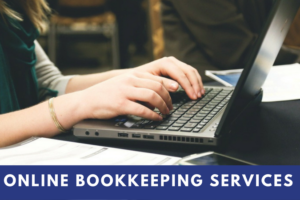Attracting visitors to your eCommerce site is only half the battle. Once they’re there, you’ve got to sell them your products or services and convince them to hit the checkout button.
In this article, I’ve collected my ten favourite tricks to improve your conversion rate and (more importantly) make more money!
This list obviously isn’t exhaustive so if you think I’ve missed anything, please leave a comment with your conversion trip, trick or hack.
1. Add a live chat feature
Even though 2018 has been the year of the chatbot, you still can’t beat good, old fashioned live chat with a real human. It’s not just good for your customer experience either. Adding in a live chat feature can have a significant impact on your conversion rates.
Here is digital guru Neil Patel, explaining why live chat has such a big impact.
“Before live chat, you had two main options to contact companies if you had any questions: phone and email… Phone calls could turn into a game of “listen to the automated prompts, press the right keys, and wait for 10 minutes… Email is great, but it often takes a business a few hours or even a few days to respond.
“Now, instead of dialing a number or composing an email, you can type a quick message into the chat box and have it answered almost instantly.”
2. Include a progress bar in the checkout design
If your checkout process takes too long, your customers will get frustrated and leave. Designing your checkout to include a progress bar shows your customer how much of the process they have left, which increases the likelihood of them engages right to the end of the sale.
3. Use crystal clear CTAs
A common mistake I see with eCommerce businesses is trying to do everything at once, which results in page designs with several different competing Calls to Action (CTAs). Including a load of CTAs on one page is likely to confuse your visitors and, ultimately, decrease the likelihood of them converting into customers.
A good strategy is to have a single, clear and effective CTA that directs your users down one path. Click here to add the product then click here to checkout then click here to pay. One, two, three and the transaction is complete.
If you want to get into the nitty-gritty of CTA design, check out this post from OptinMonster.
4. Use social proof
From the perspective of a customer, buying from an eCommerce website feels very different to buying from a bricks and mortar business. One of the most important factors is the lack of social proof. In a store you’re surrounded by other customers but you’re on your own online.
Good eCommerce websites will try and address this concern through the use of social proof. And what’s social proof? It’s basically anything that proves you’re as good as you say you are through the experiences of other people. Think case studies, reviews, testimonials and so on.
5. Offer the right payment options
Back in the early eCommerce days, it was enough to offer debit and credit card payment support and maybe PayPal if you were feeling adventurous.
Nowadays, things are different.
According to Stephen Hart of Cardswitcher, there are hundreds of different payment options and customers always expect theirs to be supported.
“In the UK, there are about 200 alternative payment methods. Think direct debits, digital wallets, cryptocurrencies and so on. If a customer can’t pay with their preferred form of payment, it’s likely that they’re going to leave and go elsewhere.”
Instead of offering all 200 alternative payment methods, Stephen recommends you talk to your customers, ask how they wish to pay and then integrate those payment methods into your website.
6. Write detailed copy
In a bricks and mortar shop, you can roll out some sales patter and sell your product or service to a prospective customer. However, with an eCommerce store, it’s your copy that does the selling.
A generic two-line product description simply isn’t going to win over visitors and turn them into customers. Dig deep and get into the nitty-gritty of each product and your conversion rate will thank you later.
7. Remove delivery charges
According to the Baymard Institute, 70% of all shopping carts are abandoned before the visitor checks out. And do you know the leading cause of abandonment?
Extra costs, including shipping, taxes and fees. (In most cases, this will just be extra shipping costs.)
It may not make sense but it’s always more effective to add in your shipping costs to the headline price of your product as customers like paying more for the actual product and getting the admin stuff for free.
8. Build a connection with social media
Never underestimate the power of a personal connection. Social media is the perfect way to build a connection with your audience, increasing their trust in your brand and developing a sense of brand loyalty. And people who are emotionally connected to a brand are far more likely to convert into customers.
9. Offer a guest checkout option
Brick and mortar stores don’t make people sign up to anything in order to buy things so you shouldn’t either. Where possible, allow customers to check out as a guest.
10. Promote free returns
This is another key concern for eCommerce shoppers. If they buy a product and don’t like it, they’ll have to pay to send it back and then wait for a refund. With high trial-and-error products like clothing, that provides a real concern.
To help assuage customers’ worries, offer free returns on orders and advertise it throughout your checkout process.



